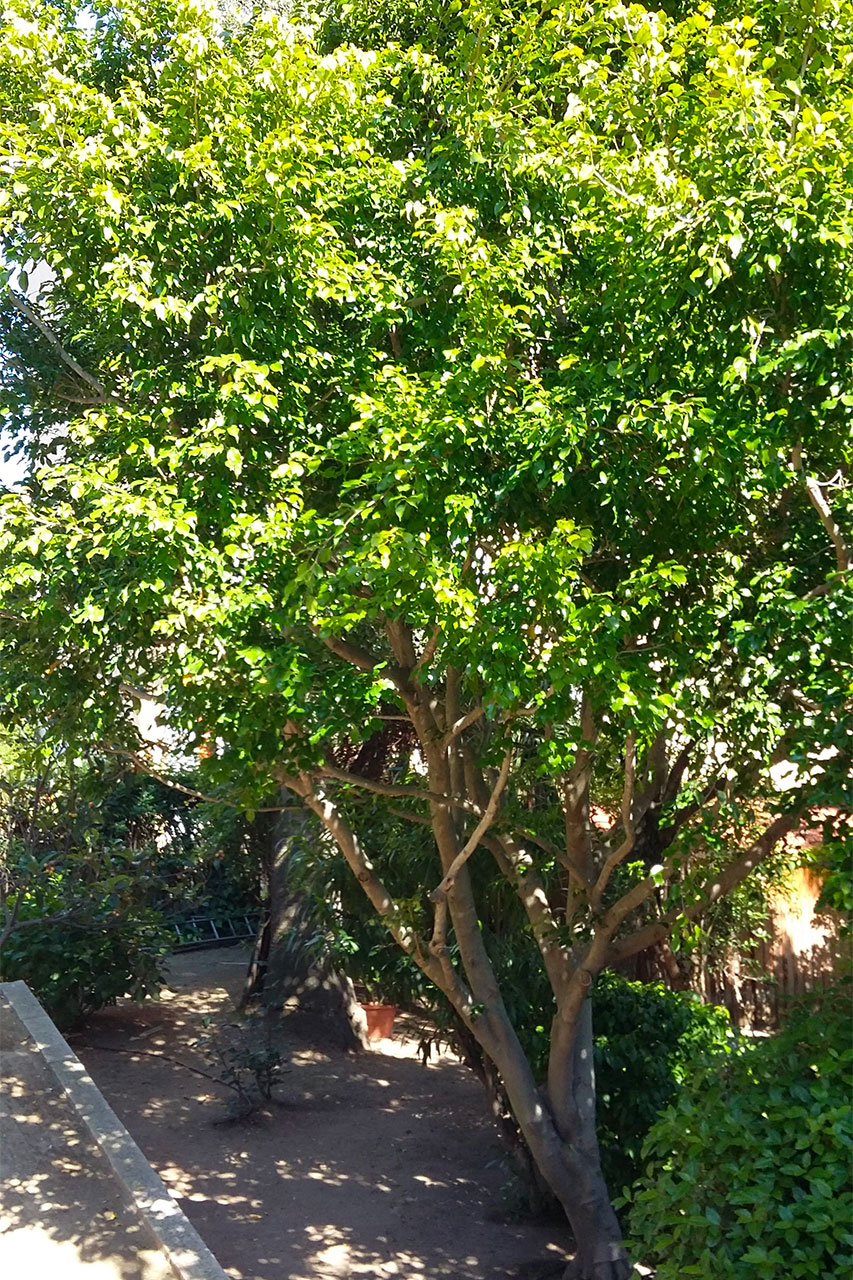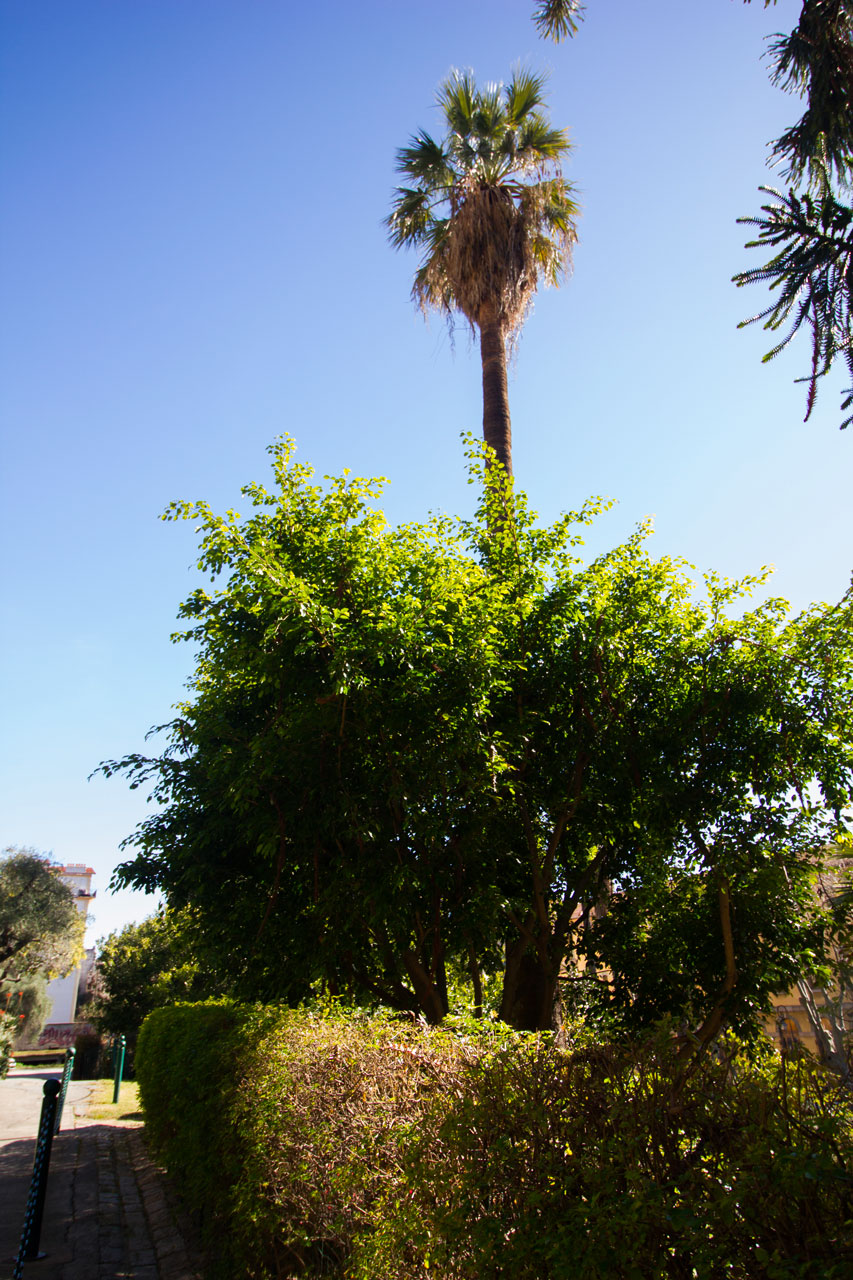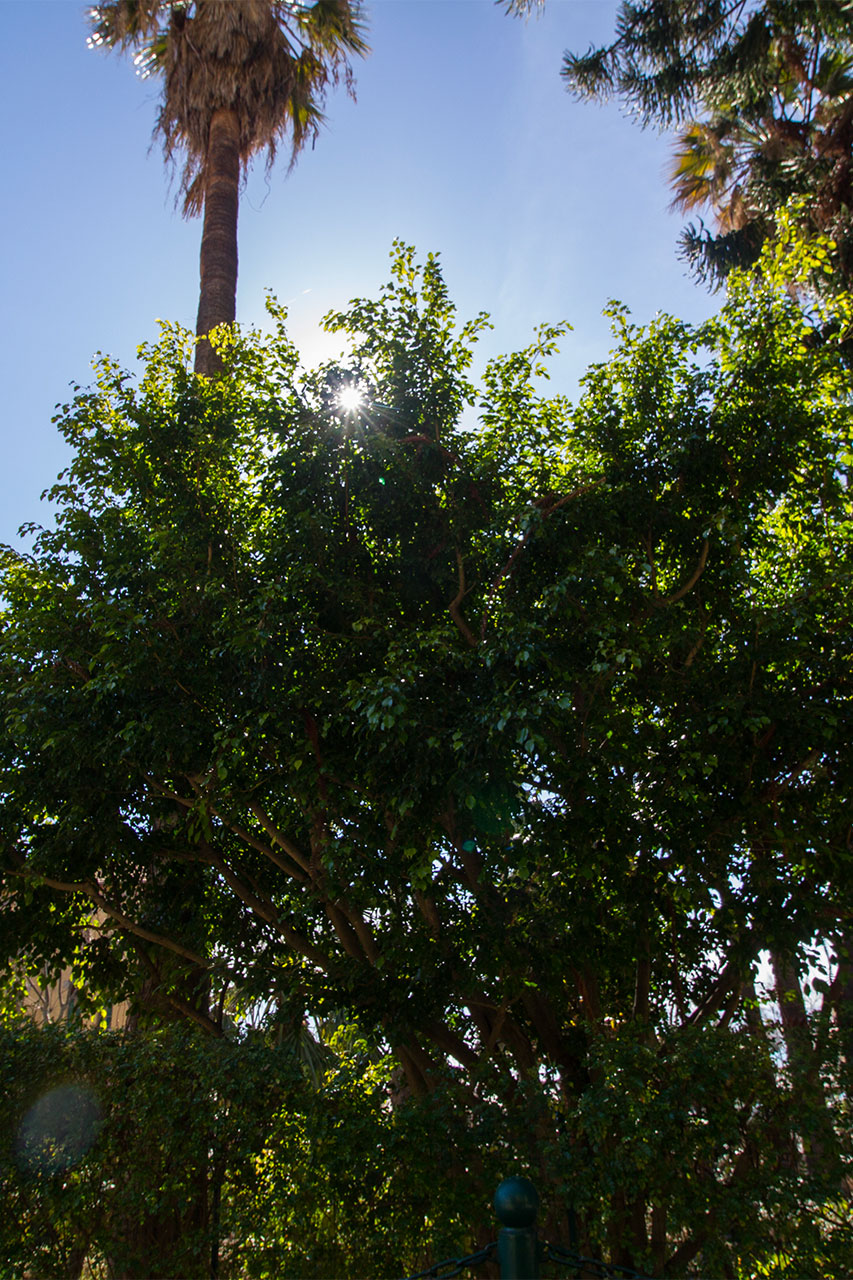
Weeping fig
Ficus Benjamina
Its name is “Ficus benjamina” in which “ficus” is the Latin name for the common fig. It is a word of Phoenician origin and its specific name “benjamina” is a mistake because it was associated with trees that were believed to contain benzoic acid or to produce a resin called storax or benzoin. The name Benjamin’s fig is a popular corruption of benzoin fig.
- Common name: Weeping fig, Benjamin’s fig
- Corsican name: Fica piinghjenti
- French name: Ficus, Figuier pleureur, Figuier étrangleur
Notes
The leaves are toxic if ingested. It contains a milky sap which can cause reactions on contact with the skin. Air-cleaning plant.
Species characteristics
Family: Moraceae, section Sycomorus
Origin: Tropical Asia (Northern India, Bangladesh, Burma, Southern China)
Habitat: Tropical forests.
Characteristics: Evergreen plant with tiny flowers in the axils of its leaves. This erect, weeping tree has the particularity of producing aerial roots which root into, and can strangle, its host.
Flowering period: Year round
Uses and properties: In some Asian pharmacopoeias its bark and leaves are used to treat rheumatism, arthritis and the liver. Locally, the thin branches are used for the cultivation of lacquer insects, Kerria lacca, whose amber yellow and purplish red resinous secretion, known by the name of shellac, are used to polish and varnish furniture and musical instruments. Formerly this secretion was used in the composition of some polishes and to colour leathers and silks.

History and oddities
The most famous weeping fig is to be seen at the Acharya Jagadish Chandra Bose Indian Botanic Garden in Kolkata which covers an area of 1,000 trunks.
It has the oddity of developing aerial roots to expand the area it covers.



